The current high levels of disruption are challenging Change Leaders like never before. Both in terms of their personal ability to deal with what seems like a constant tsunami of change and also their ability to steer an effective course for their organisation at a time when many of the norms associated with this have evaporated.
In this new series of Change Leadership blogs, we plan to consider what Change Leaders can do to successfully navigate these exceptional times. And in this initial blog, we are going to consider 4 key areas of focus right now.
But it strikes us that there are two elements to the equation.
Firstly, there is how Change Leaders need to “be” to enable them to lead change effectively at this time, which is distinct from what they need to “do” to be effective.
And we take a look at each in turn below.
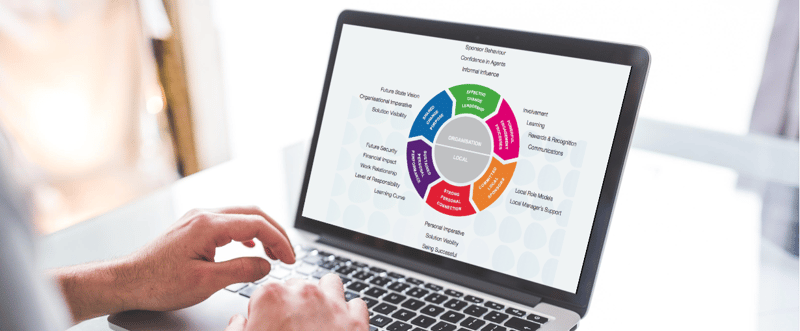
How Change Leaders need to “be” in disruptive times
Disruptive times require a disruptive leadership mindset.
During the current chaos, all types of things have been thrown up in the air for Change Leaders from knowledge & understanding to methods of observation and data-gathering. To processes and structure. And even the underlying stability of the organisations they support.
The current situation calls for a certain type of Change Leader. One that isn’t frozen or overwhelmed by the situation. One that isn’t hesitant or unsure to set direction amid the chaos. One that is open to change, continuing to create opportunities that allow their organisation to adjust and pivot quickly in disruptive times, but also one that:
-
-
-
focuses on the things that really matter including establishing and managing a new rhythm of work on change initiatives and projects
-
has credible Change Management data, transparency and knows the ‘right’ questions to ask in order to refocus the team around what is really important
-
can rapidly and flexibly create new frameworks, tools and change networks to continue to get work done and take decisions forward. As McKinsey point out in times of extreme crisis – like the current pandemic – existing operating models typically fail and leaders need to quickly establish more agile working practices to see the organisation through turbulent times
-
is able to skillfully balance being well-informed and realistic about the actions that need to be taken
-
-
In this type of environment, Change Leaders are going to “be” the type of people who thrive on confusion and ambiguity. They need to “be” highly resilient and able to identify and develop resilience in other key leaders. And be able to plot a course out of the chaos that employees in the organisation can align behind.
This type of mindset is a cornerstone of adaptive, agile Change Leadership. A topic we will return to later in this series.
4 things you can “do” to be more adaptive as a Change leader
So, we outlined how Change leaders need to “be” right now. But what can you actually “do” to be effective at Leading Change?
We think there are 4 areas of focus as follows:
1. Prioritise demand to release capacity for the things that matter most
Perpetual loading has always been a challenge for organisations. It refers to the situation where Change Leaders, rather than effectively assess and prioritise the change load faced by people in their organisations, simply operate as though there is an unlimited supply of energy and goodwill to “get change done”.
Even pre-pandemic this was a major issue for Leaders with our own Change Demand Assessment consistently indicating that almost half (49%) of employees felt that their organisation was already overloaded by change and lacked the focus to get business critical changes implemented.

But the sheer level of disruption we face today is throwing the regular rhythm of work & BAU into disarray. As well as quickly depleting the capacity needed for business-critical and survival-type changes as the organisation struggles to identify the best way forward.
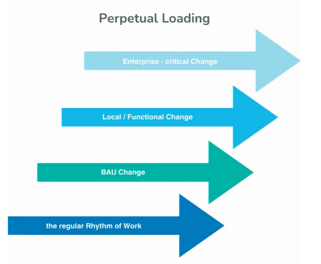
The challenge for Change Leaders is to put in place effective mechanisms and collect the type of data that enables effective change delivery across the organisation.
2. Develop & replenish the resilience of key employees to meet the challenges ahead
We have always strongly believed that resilient organisations need highly resilient people to be effective.
And, in fact, Forbes recognise resilience as one of the essential leadership skills everyone should develop to better navigate change.
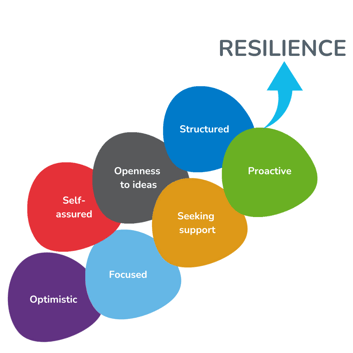
The implication for Change Leaders – something that is brought into even sharper focus at times of high disruption like right now – is that they need to take a structured approach to developing and replenishing the resilience of key individuals in the organisation tasked with leading change (as our diagram shows there are number of characteristics of resilient individuals that can be actively developed). This applies to not only themselves but also other business leaders and high performing individuals that are going to be the engine for the organisation in highly disruptive times.
Resilient leaders are not immune to the impact of disruption but by specifically focusing on developing their resilience levels you can help them become more adaptable, open to learning and willing to engage in new ways of working. Which means they can rebound faster and adopt new attitudes to change that deliver better outcomes.
3. Adopt new frameworks, methods and tools to manage more effectively right now
The past 12 months has been one of the most challenging ever for Change Leaders and their teams. In terms of how they communicate, collaborate and deliver change initiatives.
However, research by McKinsey points to the fact that building capability to lead organisations out of the pandemic is actually more important now than before the COVID-19 crisis began.
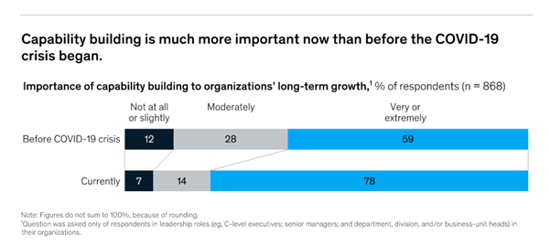
The challenge for Change Leaders in what continues to be a disrupted environment is that the nature of those capabilities has changed dramatically. And there is a pressing need to adopt new change frameworks, methods, best practices and tools that quickly bring back structure, flexibility and focus for Change Management teams. Ones that:
-
-
-
ensures the right questions are asked around change capacity, commitment, resistance and legacy
-
enables the right opportunities to be identified and delivered out of a portfolio of change choices
-
allows the broad spectrum of change risks associated with organization-wide change initiatives to be fully understood, assessed and tracked
-
provides openness, transparency and accountability to be restored in Change Management reporting across the organisation
-
-
4. Match your Change leadership style to the current level of disruption
There have been a huge number of contributions to the analysis of particular leadership styles but in our work we typically see them fall into 4 categories:
-
-
-
Rational leadership – heavily driven by data, business cases and the more formal aspects of change delivery
-
Symbolic – much more focused on communication of what needs to be done, heavily invested in symbolism and leading the change
-
Specialist – believe change is about people and enlist the help of change specialists in departments like HR to help them lead the organisational change needed
-
Adaptive – require an understanding of the whole system of change that will impact on people and organisational performance
-
-
In what is a highly disrupted environment we believe strongly that Adaptive Leadership becomes key including the ability to effectively assess change demand, both at an individual and organisational level. And to create the most effective network to drive transformation, to rally people to the cause, to get skills and tools to where they are most needed and make change everyone’s business.
Take your first steps to a more adaptive Change Leadership approach
In disruptive times every step is the first step. And for many Changefirst clients first steps are small, “sure starts” based around proven, industry recognised thinking and 25 years’ plus field and academic research. But evolved to be fully fit for today’s environment with new and urgent requirement for scale, digital delivery, transferability and role-relevance.
|
|
Learn more about our Executive Leadership Bootcamp Our dynamic one-day Executive Leader Bootcamp focuses on developing Change Management as a Leadership competency for:
|

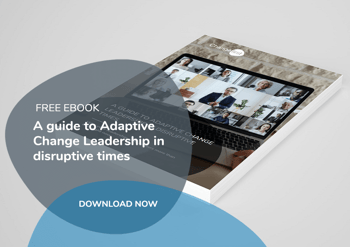



Leave a comment